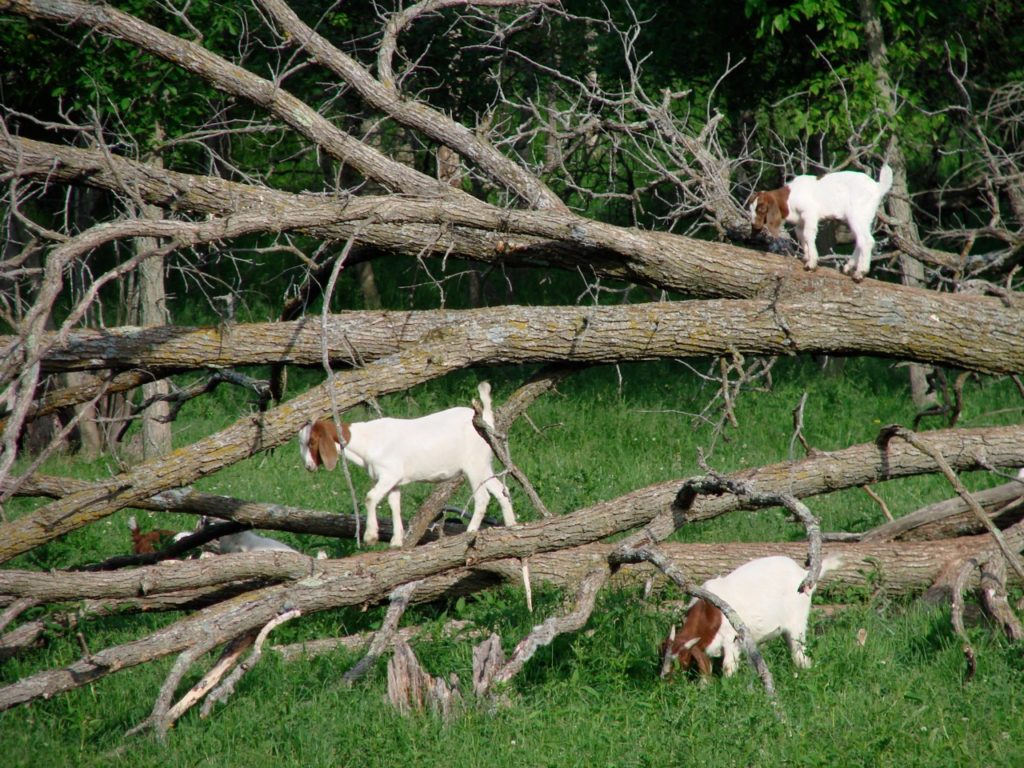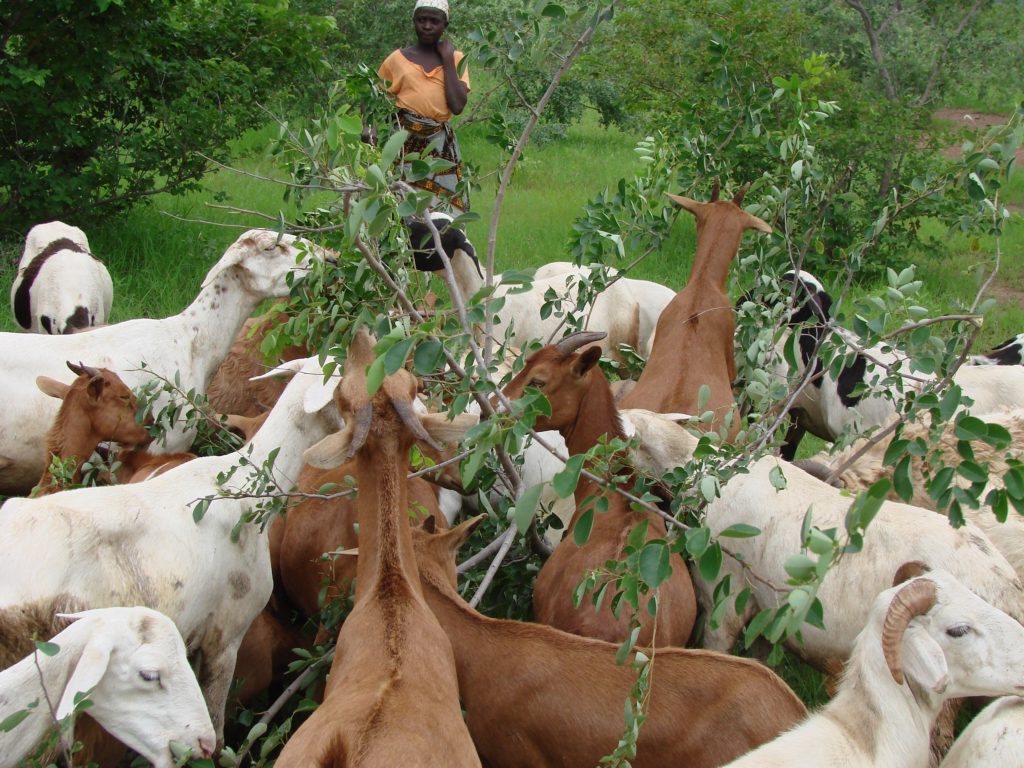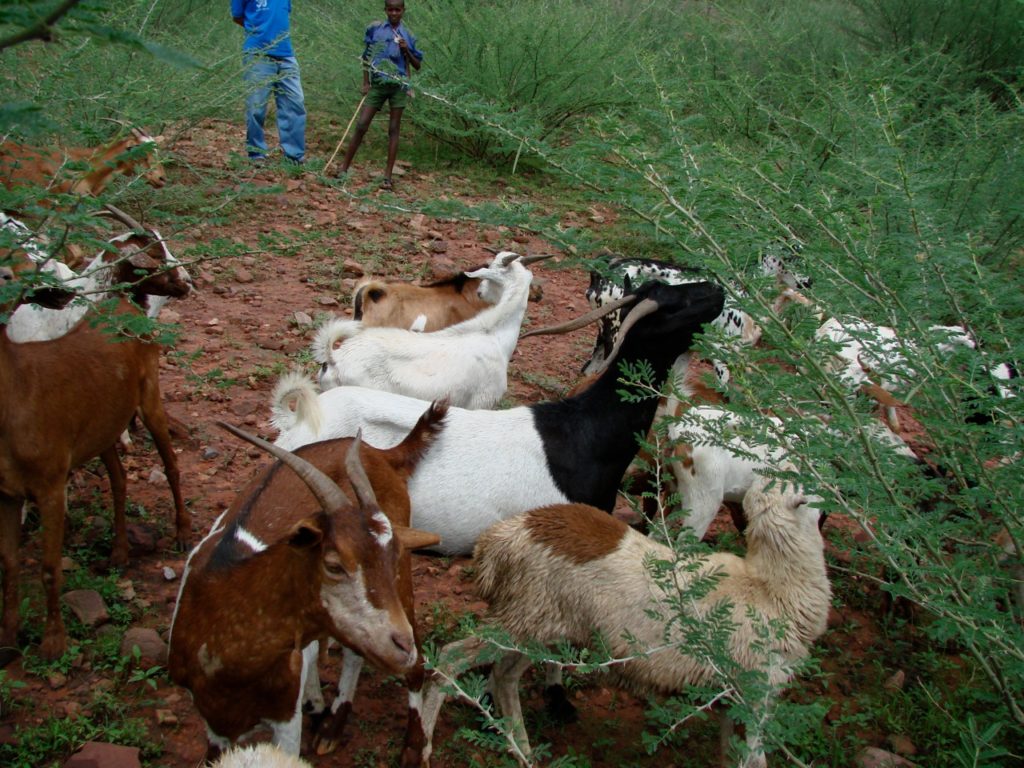Goats Browsing in the Woodlot
Goats are natural browsers. This means that they like to eat with their heads up, often reaching as high as they can for leaves, twigs and wooded area’s understory. They prefer woods to grass pasture but will also nibble on fresh, uncontaminated grass. They are observed to be much fussier in what they will eat when compared to sheep or cattle—and are talented at nibbling off the most nutrient-rich parts of plants such as flowers, young twigs and new buds even to the point of nibbling around thorns. Poison ivy is a delicacy and the young leaves of nettles, thistles and buck thorn succumb quickly to a herd of goats.

The goat’s digestive system does a very good job of turning browse into a nutritious feed source that is not able to be utilized efficiently by other livestock. Unlike native grasses, leaves and browse hold their nutritional value throughout the summer providing a consistent source of protein and carbohydrates. In contrast, summer grass matures early in the season and the nutrients are shifted to the seed head leaving a fibrous grass stem with low nutritional value for livestock. During drought conditions native grasses convert nutrients to the seed head faster than normal to ensure survival when conditions improve resulting in even less optimal grazing days for sheep and cattle. This is true globally and especially in countries with extended dry periods.

Nutrition is usually higher in browse than in grasses especially during the dry season. The goats preference for browse help them cope surprisingly well during droughts, and in arid or low fertility environments when other livestock species are more likely to struggle. Ninety percent of the world’s goat populations provide a source of protein under harsh conditions. Goats have adapted to virtually any climate and are viewed by many working in the poorest countries as the most sustainable livestock for ensuring global food security (Winrock International, 2011). The goats in the photograph below are nimbly removing leaves from around thorns in Ethiopia Highlands (Farmer to Farmer volunteer assignment, 2006).

Note: It was an early custom by mariners and pirates to place goats on islands for later use. If the goats survived fresh water was available somewhere on the island and the goats would be a source of food for later trips. Goats were spread around the navigable world in this manner, went feral, interbred and developed their own unique adaptations to a variety of environments ranging from harsh to lush. Captain James Cook is famous for dropping goats in New Zealand and other South Pacific islands for emergency food during follow up visits or shipwrecks (Storey’s Guide to Raising Dairy Goats, Jerry Belange, 2010).
